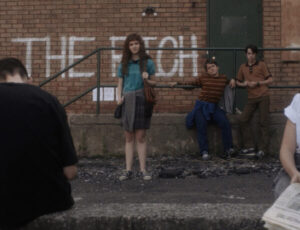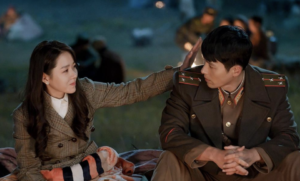Ask the average person what they know about Burma, and chances are that they won’t be able to tell you much. Once one of Asia’s most advanced countries, Burma has been struggling under the iron grips of a military regime for nearly 50 years. The 2012 documentary, They Call it Myanmar, sheds some light on one of the most secluded countries in the world. The film dives into its history, past occupations and the current issues that affect the populace. Filmmaker Robert H. Lieberman draws from his passion for the customs and people of Burma to send his audience on an educational journey into this oft-overlooked country.
The film broadly sweeps several key topics in Burma, including infrastructure, education, health care, religion and military government. Admittedly, the film starts off feeling a little paternalistic; a Westerner coming in and speaking for the people. Thankfully, the film shakes this off within the first hour. Lieberman speaks with many Burmese people, most of whom keep their identities a mystery in order to avoid government persecution. The threat of imprisonment is very real to any who speak out against the substandard living conditions of the country. In fact, the entire film, which was shot over 2 years, had to be conducted largely in secret.
The film has a number of fascinating interviews with both experts on Burma and regular citizens. Lieberman even got a chance to speak to Nobel Peace Prize winner Aung San Suu Kyi. The English educated Suu Kyi has infamously been kept under house arrest for the better part of the last two decades. Her crime? Attempting to bring democracy to Burma and creating ‘social unrest’. Thankfully, Suu Kyi is currently free, and working in the government.
What really hits home is the cycle of events that contribute to the continued collapse of the citizen’s welfare. There’s no money from government, so infrastructure crumbles. The average citizen is so poor that they cannot afford to keep their children in school, and must put them to work as soon as they can. Those who make it out of this cycle and receive education ultimately leave the country to look for greener pastures. Due to the lack of education, one of the most honorable positions a regular citizen can obtain is a position in the military. Thus, the ruling body is comprised of uneducated individuals who are easily indoctrinated. It’s explained that traditionally the Burmese government did not exist to meet the needs of the people, but rather to protect Burma from outside forces. Although this threat is largely abated, the military regime still holds power, crushing citizen opposition and critical voices. Despite this, the film maintains that there is hope in Burma’s youth, who, more than any generation before them, are embracing modern Western culture.
They Call it Myanmar is an eye-opening look at the country, and although it fails to go into depth on any one topic, it tells a very human story. Lieberman provides a sensitive analysis of Burma, his camera finding the hope for a better future within the Burmese people, and portraying it alongside their heartbreak. Although the film starts off feeling like little more than a special on the Discovery Channel, it grows into a holistic look at Burmese life, and brings the country out of the shadows.







